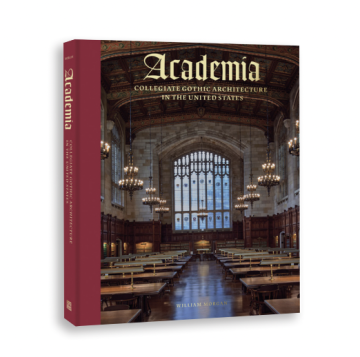Whitcomb: Absent Fathers, Absent Students; Less Video, More Historians, Please
Sunday, November 05, 2023
There's nothing like the sun as the year dies,
Kind as it can be, this world being made so,
GET THE LATEST BREAKING NEWS HERE -- SIGN UP FOR GOLOCAL FREE DAILY EBLASTTo stones and men and beasts and birds and flies,
To all things that it touches except snow,
Whether on mountains side or street of town.
The south wall warms me: November has begun,
Yet never shone the sun as fair as now
While the sweet last-left damsons from the bough
With spangles of the morning's storm drop down
Because the starling shakes it, whistling what
Once swallows sang. But I have not forgot
That there is nothing, too, like March's sun,
Like April's, or July's, or June's, or May's,
Or January's, or February's, great days:
August, September, October, and December
Have equal days, all different from November.
No day of any month but I have said---
Or, if I could live long enough, should say---
'There's nothing like the sun that shines today.'
There's nothing like the sun till we are dead.
“There’s Nothing Like the Sun,’’ by Edward Thomas (1878-1915), English writer of poetry and prose. A close friend of Robert Frost, he was killed in the First World War.
“I’m tired of all this nonsense about beauty being only skin-deep. That’s deep enough. What do you want, an adorable pancreas?”
-- Jean Kerr (1922-2003), American writer
xxx
The dry leaves sound like rain as the wind blows them up and down the streets.
xxx
As we get an extra hour’s sleep this morning, or at least an extra hour to lie in bed ruminating on our manifold sins and regrets, it’s time to push again for New England to join eastern Canada by adopting year-round Atlantic Standard Time. We’re just too far east to be in Eastern Standard Time. The extra afternoon light that would come with such a change would be good for business and our health, including morale. Schools could make morning adjustments, as could New England’s relatively few farmers, who traditionally get up around sunrise.
xxx
Much of the epidemic of public-school absenteeism in Rhode Island can be blamed on the explosion in the number of single-parent (usually the mother) households, caused by the disappearance of responsible fathers who share, economically and otherwise, in the raising of children. This, of course, is related to the decline of marriage – an institution that brings with it certain law-backed responsibilities. Indeed, you might call marriage the smallest unit of government.
Many aspects of the social disintegration we see around us, in the schools and elsewhere, are caused by the erosion of marriage, especially among poorer people who most need its structure and protections. Thus, we so often ask: Where are the fathers?
xxx
Mainers on Nov. 7, will vote on a ballot initiative that would allow for “a new {state-owned} power company governed by an elected board to acquire and operate existing for-profit electricity transmission and distribution facilities in Maine.”
The Pine Tree State now has two investor-owned utilities, Central Maine Power (CMP) and Versant Power, which together provide electricity for 97 percent of Mainers. Not surprisingly, the utilities have pumped millions of dollars to try to defeat the measure, which is being watched carefully around America.
Educators Needed
I’ve been struck since Oct. 7, when Hamas invaded southern Israel and murdered more than 1,400 civilians, and kidnapped hundreds more, how repetitive the news coverage, especially on TV, has been.
Day after day, we get variants of the same sort of horror stories, the same sort of videos of bombing damage in Gaza, where the terrorist dictatorship Hamas is based, the unverifiable civilian body counts there (though obviously very high, in large part because Hamas uses civilians as shields) reported by Hamas and so on. (Israel, the only democracy in the Mideast, has free and famously skeptical news media. Hamas tightly controls “information” that it releases.)
After a few days, I started to realize I was unlikely to learn much that was new and important by watching the box.
Part of the problem is the huge cutbacks in full-time journalistic staffing in the past few years. (Thank God for those brave journos freelancing for some news outlets in war zones.) And then there’s the lure of video (much of it free) over reportage.
As the old line goes, “If it bleeds, it leads.’’
One thing that would improve coverage would be if more news outlets would, in place of repetitive and redundant images and cut-and-paste “reporting,’’ bring in articulate historians, sociologists, economists and other experts to explain the causes/context of the Israel-Hamas war and, more broadly, the seemingly endless Palestinian-Israeli conflict. Most of these experts can be brought in for free (with the lure of promoting their books). Viewers who aren’t big readers would learn such useful basic facts as that there was never a nation called Palestine; the region Palestinians now claim was ruled by the Ottoman Turks (not Arabs) from 1517-1917, and it has long been inhabited by wide mix of ethnicities and a mélange of Muslims, Jews, and Christians.
Indeed, it has long been one of the most sociologically complicated places in the world. But to most TV news viewers, it’s just two sides that hate each other, each with historic claims to the same crowded strip, battling it out – forever.
xxx
Typical!
The GOP/QAnon-controlled U.S. House wants to tie $14.3 billion in aid for Israel to an equivalent cutback in funding for the IRS, whence cometh the money to pay for, well, Israel. The outstandingly corrupt and ill-read members led by treasonous, far-right Speaker Mike Johnson (R.-Fossil-Fuel Industry) seek to please their very rich donors, who have long been audited at much lower rates than middle-class people. That’s been a comfort to them in their usually successful efforts at tax evasion.
Bribery takes our solons far.
Of course, as of this typing, Johnson and his gang had made no provision for giving further aid to Ukraine for defending itself from Russian barbarism – even though Hamas and the anti-Israel terror group Hezbollah, which is based in Lebanon, and Putin’s dictatorship are allies. American aid to Ukraine has been a bargain, by enabling Ukraine to degrade the Russian military’s ability to threaten the West. But Putin has admirers in the congressional branch of the Grand Old Party, which has been heading into an American version of fascism, complete with their very own wanna-be dictator. (Republican governors, because they have to actually govern, tend to be a more reasonable tribe.)
(By the way, one of Mr. Johnson’s obsessions has been battling homosexuality, which he has called an errant “lifestyle’’. Putin also hates homosexuality.)
Here's a solid review of U.S. aid to Ukraine:
https://www.cfr.org/article/how-much-aid-has-us-sent-ukraine-here-are-six-charts
A key part of the Republican coalition, especially in the old Slave States, are Evangelical Christians. Many of them want to impose their often incoherent theologies on everyone else, and support Israel for their end-of-world reasons, not because they have any particular love of Judaism per se. (Yes, I have read the whole Bible -- its beauties, its nastiness and its innumerable contradictions. And which translation do you choose?)
Foreign aid – which is given because it’s seen as being in the U.S. national interest, and not just to be nice -- is a mere 1 percent of the federal budget. Many, perhaps most, Americans think that it’s 10 percent or more.
xxx
Again and again, obviously, dangerous people are allowed to keep walking the streets after multiple arrests and little sign they are being monitored, of which the horrific Cranston case linked here is but one local example. Clearly, the police and the courts need more staff and follow-through. That there are so many guns around (thank you, GOP/NRA) makes it all the scarier.
xxx
Hospital patients and staff can find it very exciting when a private-equity-owned operation such as Prospect Medical Holdings moves in. Prospect now owns Roger Williams Medical Center in Providence and Our Lady of Fatima Hospital in North Providence. But Prospect is slated to sell them to the Centurion Foundation.
The business model for private-equity firms often involves stripping cash out of an organization, burying it in debt and taking a chainsaw to almost any expense, even those essential to the purported mission of the institution. After that’s accomplished, private equity firms usually sell off what’s left of the organization to another buyer within a very few years. Along the way, investors and senior executives are enriched.
But one must ask: Would those two hospitals have been closed without Prospect?
xxx
We visited relatives in New Hope, Pa., on the Delaware River the other week. That’s very close to where George Washington’s troops crossed the river on the night of Dec. 25-26, 1776, on their way to their successful sneak attack on Britain’s Hessian mercenary troops at Trenton, N.J.
I was surprised at how narrow the stream looked compared to what the ice-floe-filled Delaware looks like in Emanuel Leutze’s famous painting, done in 1851. Patriotic dramatic license!
xxx
While complaining about inflation, Americans spent a record $12.2 billion on Halloween this year.
xxx
Companies trying to put up wind turbines off the Northeast coast face a lot of problems, including, besides nimbyism partly financed by oil and gas companies, that costs were higher than they had projected for turbines amidst supply-chain snags. They would have been better off with contracts that could be adjusted for inflation, as is the norm in Europe.
xxx
It’s nice to see many people at such establishments as CVS drugstores pushing back against the erosion of personal service exemplified by automatic checkout machines, or maybe a better name is personnel-layoff devices. The things often don’t work well, or at all, and they often take longer than dealing with a human cashier.
Going Gothic
“Americans are the only people in the world known to me whose status anxiety prompts them to advertise their college and university affiliations on the rear window of their automobiles.’’
-- Paul Fussell (1924-2012), American historian
In reading William Morgan’s brilliantly written and gorgeously illustrated new book, Academia – Collegiate Gothic Architecture in the United States, you might recall Winston Churchill’s famous line: “We shape our buildings; thereafter they shape us.’’
I thought of this looking back at an institution I attended, a then-all-boys boarding school in Connecticut called The Taft School, founded by Horace Taft, the brother of President William Howard Taft. Its mostly Collegiate Gothic buildings made some of us students feel we were in a hybrid of a medieval church and a fort. This, I think, encouraged a certain personal rigor and seriousness of purpose, amidst the usual adolescent cynicism and jokiness.
The blurb from the publisher (Abbeville Press) summarizes well the book:
"Academia provides the ultimate campus tour of Collegiate Gothic architecture across the United States, from Princeton and Yale to Duke and the University of Chicago. It tells the surprising story of how the Gothic style of Oxford {whose origins go back to 1096} and Cambridge {founded in 1209} was adapted and transformed in the United States, to lend an air of history to the country’s relatively young college and prep school campuses. And it shows how Collegiate Gothic architecture, which flourished between the Gilded Age and the Roaring Twenties {into the Thirties, too}, continues to define the popular image of the college campus today—and even inspire new construction.’’
The style originally reflected a certain Anglophilia embraced by some American nouveau riche as they accumulated fortunes in a rapidly expanding economy. Rich donors, and the institutional architects they got hired, wanted to create buildings evoking kind of elite, aristocratic culture at certain old Protestant colleges and universities and private boarding schools. (Many of the latter were modeled on English boarding schools catering to the aristocracy.) There was often a lot of snobbery involved. But the style spread to other institutions, too, including businesses and government offices, around the country.
Some of this included fantastical (to the point of silliness) ornamentation and instant aging of stonework to suggest the wear of centuries on what were brand-new buildings, perhaps most flamboyantly at Yale. Get out those gargoyles!
The nearest major Collegiate Gothic campus to Providence is the Jesuits’ beautiful Boston College in Chestnut Hill, just outside of Boston.
Some institutions mostly stuck with the simpler and cheaper Georgian brick style (in New England that includes even mega-rich Harvard and merely rich Dartmouth and Brown) but Collegiate Gothic was a huge thing for decades, and much of it was beautiful. Even today, architects are designing, sometimes ingeniously, new applications of the style.
This book is about much more than architecture. It’s also about personalities, many of them colorful, class, including social climbing, economics, politics and many other things.
One of the book’s joys is Mr. Morgan’s footnotes, which besides adding to the understanding of the main text, are often very entertaining, sometimes even hilarious.

Robert Whitcomb is a veteran editor and writer. Among his jobs, he has served as the finance editor of the International Herald Tribune, in Paris; as a vice president and the editorial-page editor of The Providence Journal; as an editor and writer in New York for The Wall Street Journal, and as a writer for the Boston Herald Traveler (RIP). He has written newspaper and magazine essays and news stories for many years on a very wide range of topics for numerous publications, has edited several books and movie scripts and is the co-author of among other things, Cape Wind.
Related Articles
- Whitcomb: Woo Sox Experience - ‘And the Living Is (Sometimes) Easy’; Bloated Budget, My Trump Take
- Whitcomb: Smoke Gets in Our Eyes; Go Vertical and Prefab; That Old House; ‘The Longevity State’?
- Whitcomb: Back to the Farm in NE; Addicted to Adventure Drama; Hunter Woes; Peddling Plots
- Whitcomb: Ambiguities of Patriotism; Nonstop Nimbys; When Gangsters Reign; ‘Social Housing’
- Whitcomb: Torpor Time; Summer Reading; Legacies; Wonders of Walking
- Whitcomb: Neighborly Taxes; Affirmative Action by Other Means? Don’t Gum Up the Turbines; Wet Power
- Whitcomb: Leisurely Lunches; Unchecked Candidates, Goncalves Fiction; Ceiling Cracks
- Whitcomb: Providence Recession Prep; Maine Chance; Extended-Family Housing
- Whitcomb: Trust Troubles; Take Their Money; Bank Roulette
- Whitcomb: At the End; Parking Over Housing; Steam From the River; Bearing Witness
- Whitcomb: Newport Spring; Order a Tree; Read While Traveling; Immigrant Solutions
- Whitcomb: I Headed for the Hills; Ukraine Needs These Things; Antidote to Abortion War?
- Whitcomb: Armory, Our Inconvenient Castle; Bikes and Business; ‘Woke’ Myth; RIP Reynolds
- Whitcomb: Fall Fish; Lunching With the Prince; Autumn Assault; Classics
- Whitcomb: Soak Up the Extra Water; Death Be Proud; Honestly Facing the Migrant Crisis; Mitt Gives Up
- Whitcomb: More $ Up the Road; Publicly Owned Utilities; Slob Society; Conscription
- Whitcomb: Month of Mock Horror; Zoning Revolution? A Much Bigger Looter
- Whitcomb: Global-Warming Planning; Native-American Street Signs; Israel at War
- Whitcomb: 75 Should Be the Max for Feds; No Pardons; Competition for Amtrak; COVID Camouflage
- Whitcomb: Instant Trouble; Buying ‘Em Out; Charging as You Drive
- Whitcomb: Heartwarming Entertainment in Arctic; Can’t Win on Immigration; Parking Districts
- Whitcomb: Diversify Your Plants; Where to Charge It; Suckers in Sewer; For Fairer Social Security
- Whitcomb: Warm Up the Warming Issue; In Search of Supplies; Home Hell and Comfort
- Whitcomb: “Improvements’ That Turn on Us; Offshore Obfuscations; Seal of Disapproval
- Whitcomb: Metered Metropolis; Will They Kill a Golden Goose? Lawless Migrant Bicyclists










